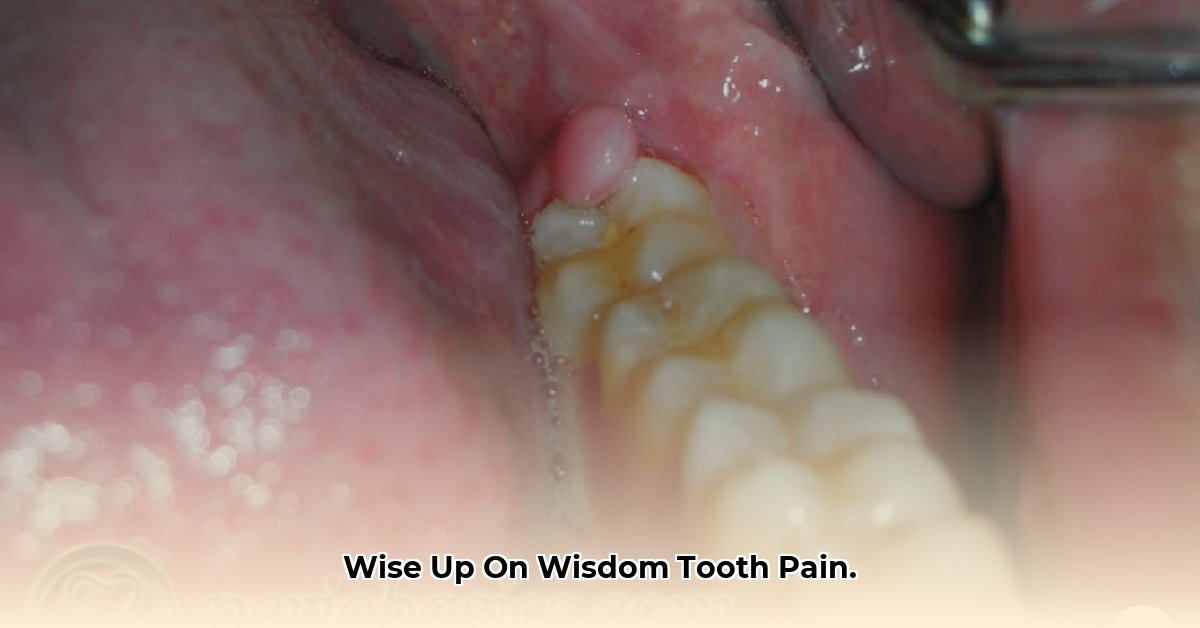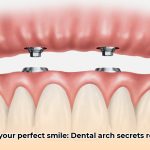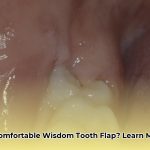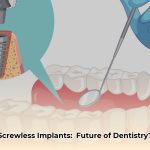This guide provides comprehensive information about pericoronitis, a common dental issue often associated with wisdom teeth. We’ll explore what an operculum is, why it can become problematic, and how to manage symptoms, including home care remedies and professional treatment options.
What is an Operculum?
An operculum is a flap of gum tissue that can partially cover a tooth as it erupts. While it can occur with any tooth, it’s most commonly associated with wisdom teeth. Because wisdom teeth are the last to erupt, there’s often insufficient space in the jaw, leading to partial eruption and the formation of an operculum. This flap can trap food particles and bacteria, creating an environment ripe for infection.
Pericoronitis: When an Operculum Gets Infected
Pericoronitis is an inflammation and infection of the gum tissue surrounding a partially erupted tooth, typically a wisdom tooth. It’s essentially an infection underneath and around the operculum.
Recognizing the Symptoms
Pericoronitis symptoms can range from mild to severe. You might experience:
- Pain: This can vary from a dull ache to a sharp, throbbing sensation.
- Swelling: The gum tissue around the affected tooth may appear puffy and inflamed.
- Redness: The gums may appear brighter red than usual in the area of the operculum.
- Bad Breath or Taste: A persistent unpleasant odor or taste in your mouth can be a sign of infection.
- Difficulty Opening Your Mouth (Trismus): Inflammation can restrict jaw movement.
- Pus: A yellowish-white discharge indicates an active infection.
- Fever: While less common, a fever may suggest a more serious infection.
- Difficulty Swallowing: Swelling can sometimes make swallowing painful.
| Symptom | Description |
|---|---|
| Pain | Discomfort ranging from a dull ache to a sharp throb |
| Swelling | Puffiness and tenderness around the affected area |
| Redness | Noticeable change in gum color, often appearing bright red |
| Bad Breath | Persistent unpleasant odor or taste |
| Trismus | Limited jaw movement, difficulty opening the mouth |
| Pus | Yellowish-white discharge, a sign of infection |
| Fever | Elevated body temperature |
| Difficulty Swallowing | Pain or discomfort when swallowing |
What Causes Pericoronitis?
The primary cause of pericoronitis is the accumulation of bacteria under the operculum. This flap creates a difficult-to-clean area, allowing bacteria to thrive and multiply. Contributing factors may include:
- Poor Oral Hygiene: Difficulty cleaning around the operculum makes it harder to remove bacteria.
- Impacted Wisdom Teeth: Trapped teeth create an even more challenging environment for cleaning.
- Stress: Stress can weaken the immune system, making individuals more susceptible to infections.
- Smoking: Smoking irritates gum tissue and can increase the risk of infection.
Managing Pericoronitis: Home Care and Professional Treatment
Home Care: Easing Discomfort
Home care can provide temporary relief from mild pericoronitis symptoms.
-
Warm Salt Water Rinses: Dissolve ½ teaspoon of salt in 8 ounces of warm water. Gently swish for 30 seconds, several times a day. This can help soothe inflammation and flush out debris.
-
Over-the-Counter Pain Relievers: Ibuprofen (Advil, Motrin) or acetaminophen (Tylenol) can reduce pain and inflammation. Follow dosage instructions carefully.
-
Gentle Cleaning: Carefully brush and floss around the area, being mindful not to irritate the inflamed tissue. A water flosser (oral irrigator) on a low setting may help remove trapped debris.
-
Soft Foods: Choose easy-to-chew foods to minimize irritation.
When to See a Dentist
If your symptoms don’t improve within a few days or worsen, it’s crucial to see a dentist. Signs that warrant immediate professional attention include:
- Severe pain unresponsive to over-the-counter medication
- Increased swelling, redness, or pus
- Difficulty swallowing or breathing
- Fever
- Trismus (lockjaw)
Professional Treatment Options
Your dentist will assess your condition and recommend the most appropriate treatment. Options include:
- Professional Cleaning: Your dentist can thoroughly clean the area under the operculum to remove debris and bacteria.
- Antibiotics: If the infection is severe, antibiotics may be prescribed.
- Operculectomy: This minor surgical procedure removes the operculum, allowing the tooth to erupt fully and preventing further infection.
- Wisdom Tooth Extraction: If the wisdom tooth is impacted or recurrent pericoronitis is a problem, extraction may be the best long-term solution.
Post-Operative Care
After an operculectomy or extraction, follow your dentist’s post-operative instructions carefully. This typically includes:
- Keeping the area clean with gentle rinsing
- Avoiding certain foods
- Taking prescribed medications as directed
Ongoing Research and Uncertainties
While the information presented here is based on current understanding, research on pericoronitis is ongoing. Scientists are investigating various factors that may influence its development and exploring new treatment options. Some areas of active research include:
- The relationship between operculum shape and the risk of pericoronitis
- The role of individual anatomy and genetic predisposition
- The effectiveness of different irrigation techniques
It’s important to discuss your individual situation with your dentist, who can provide the most up-to-date and personalized advice.
- Water Mill Electricity Generator Provides Free Home Power - December 16, 2025
- Water Wheel Electric Generator Provides Free Home Electricity - December 15, 2025
- Choosing the Right Portable Hydro Turbine for Your Needs - December 14, 2025
















